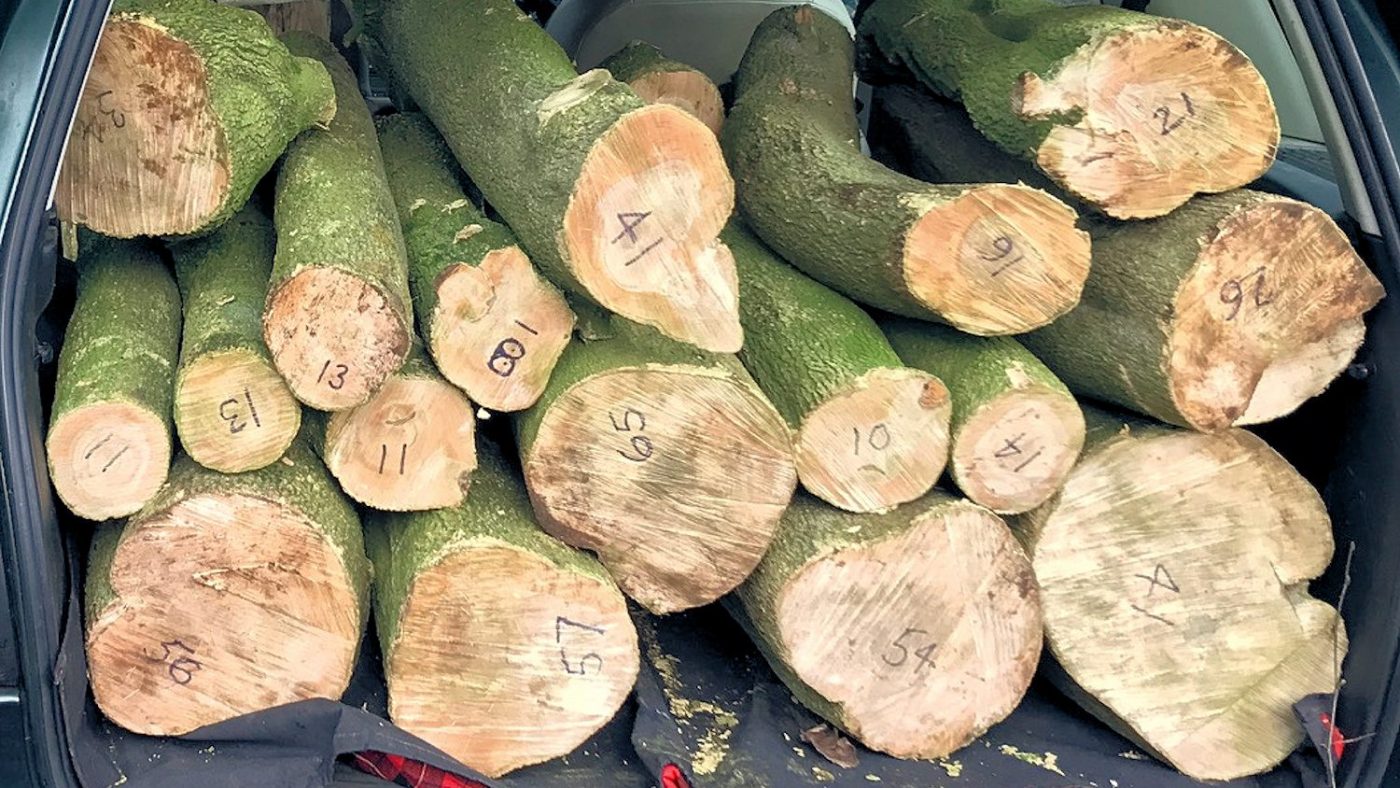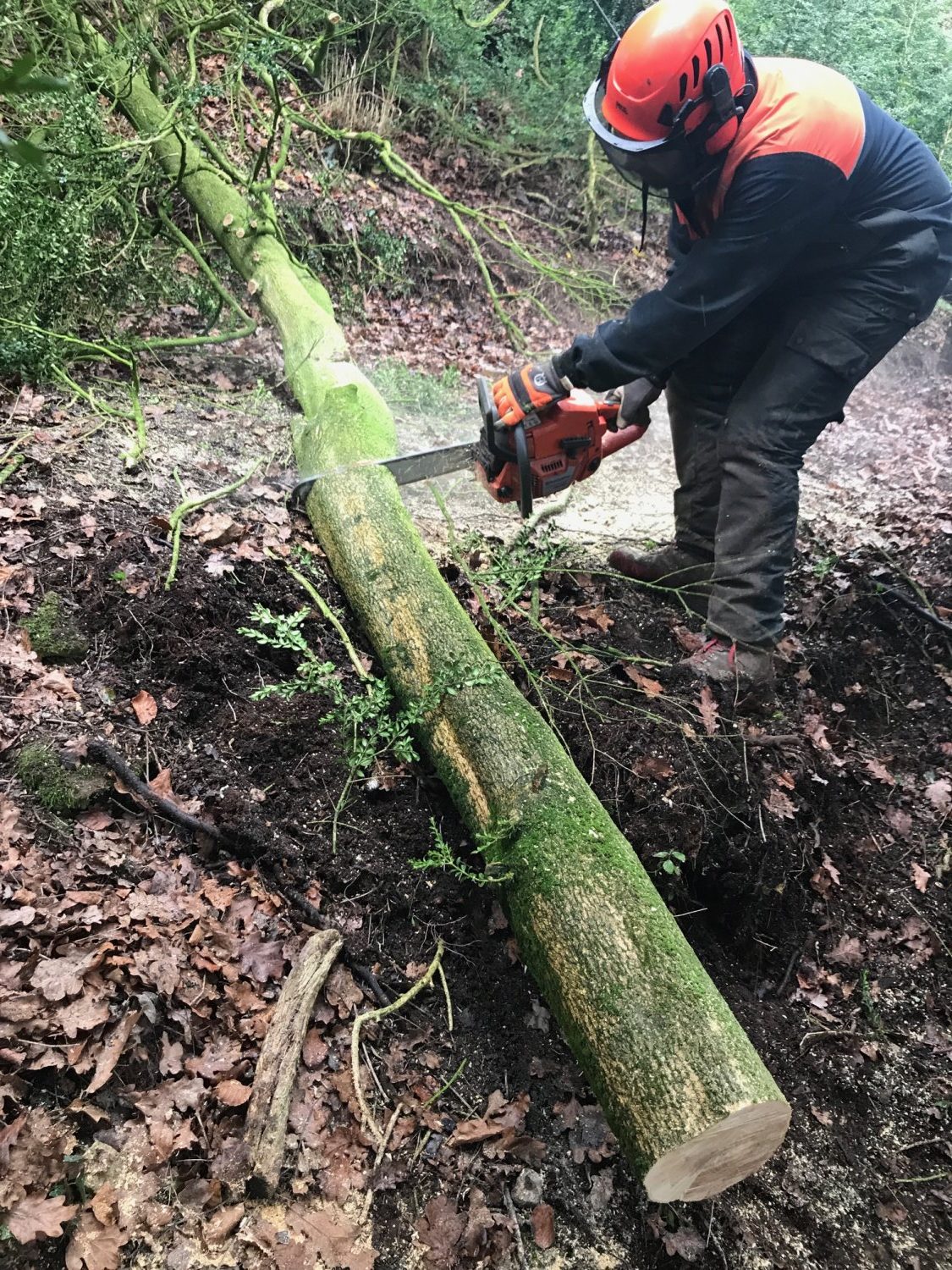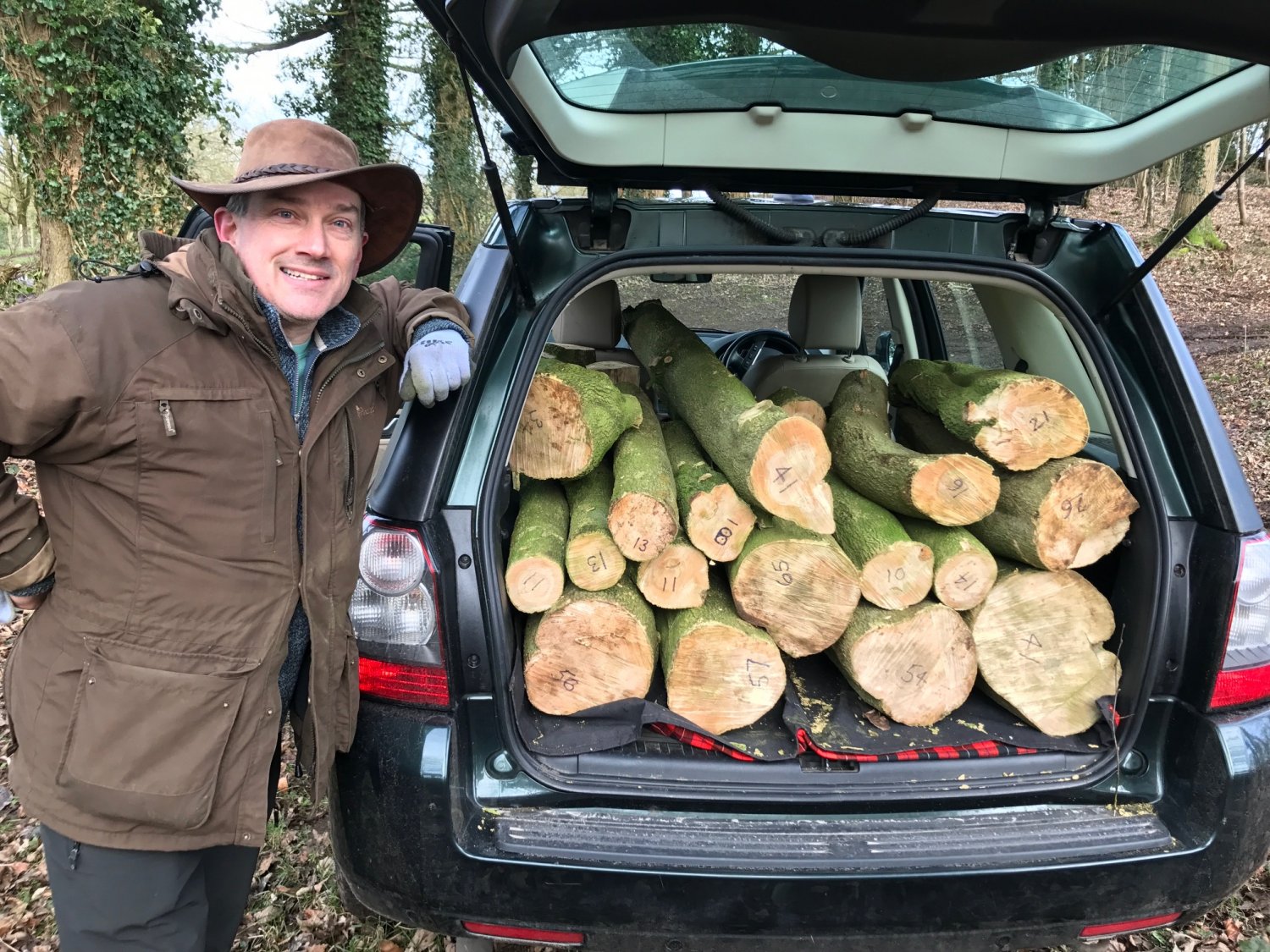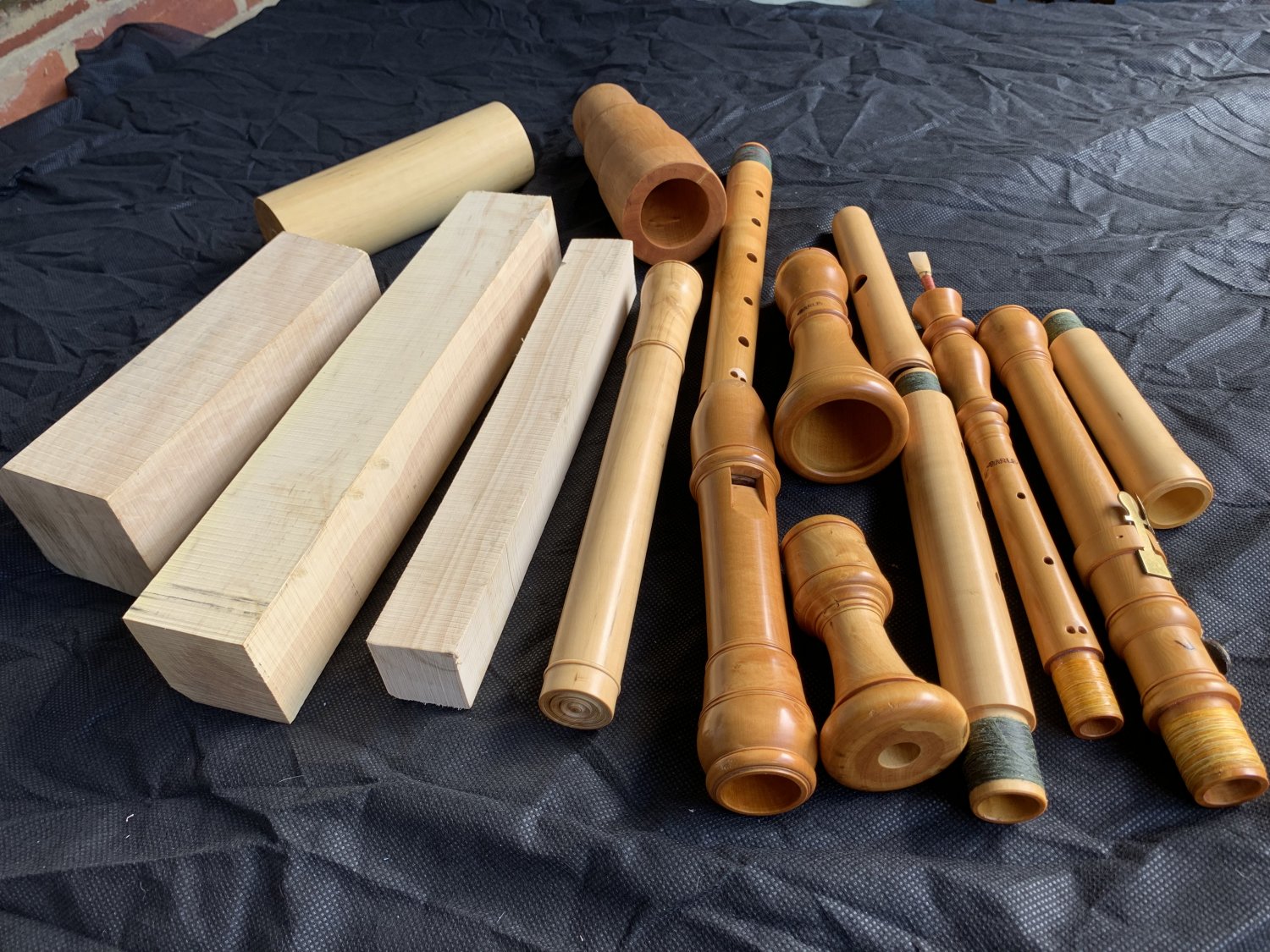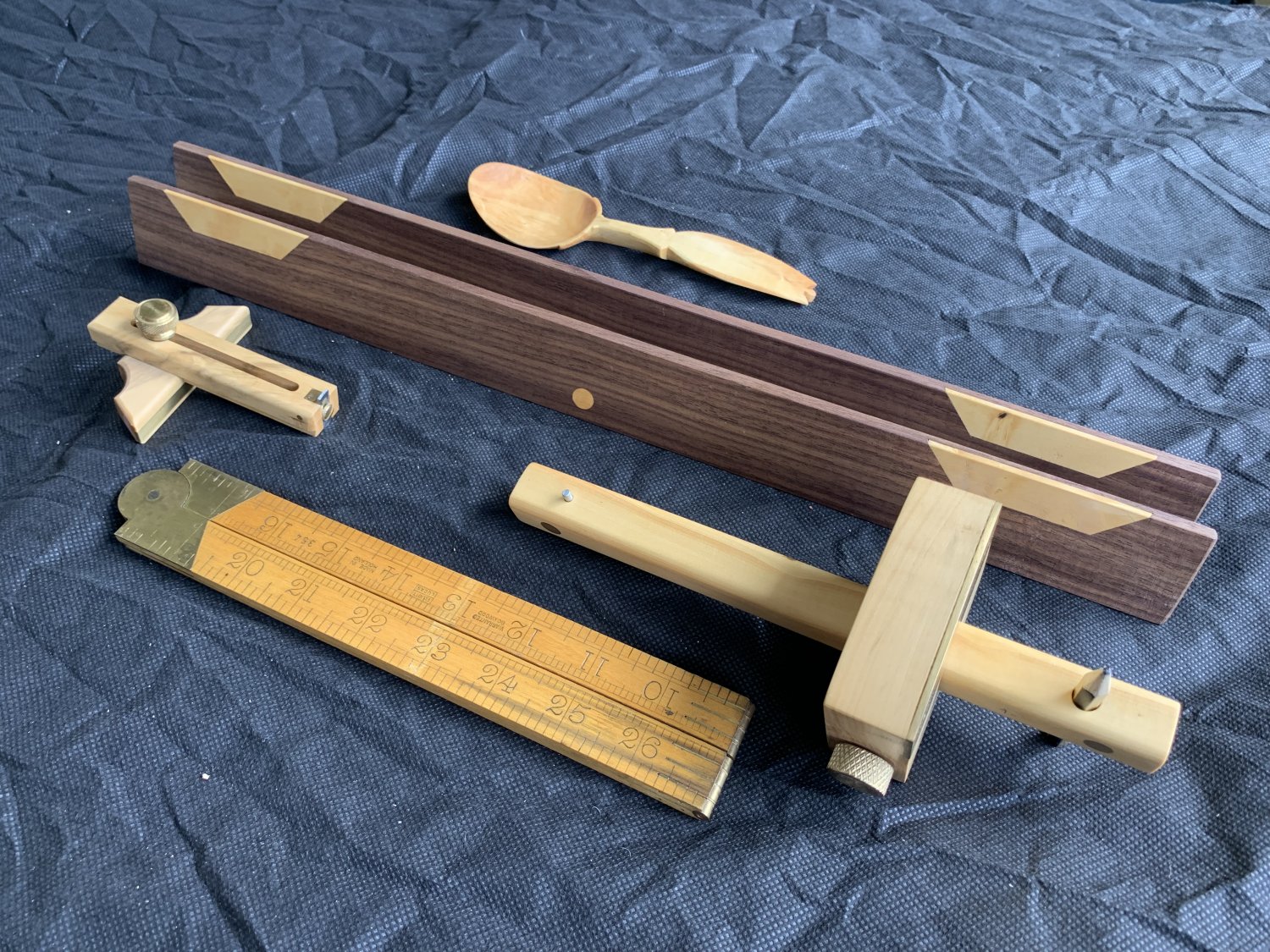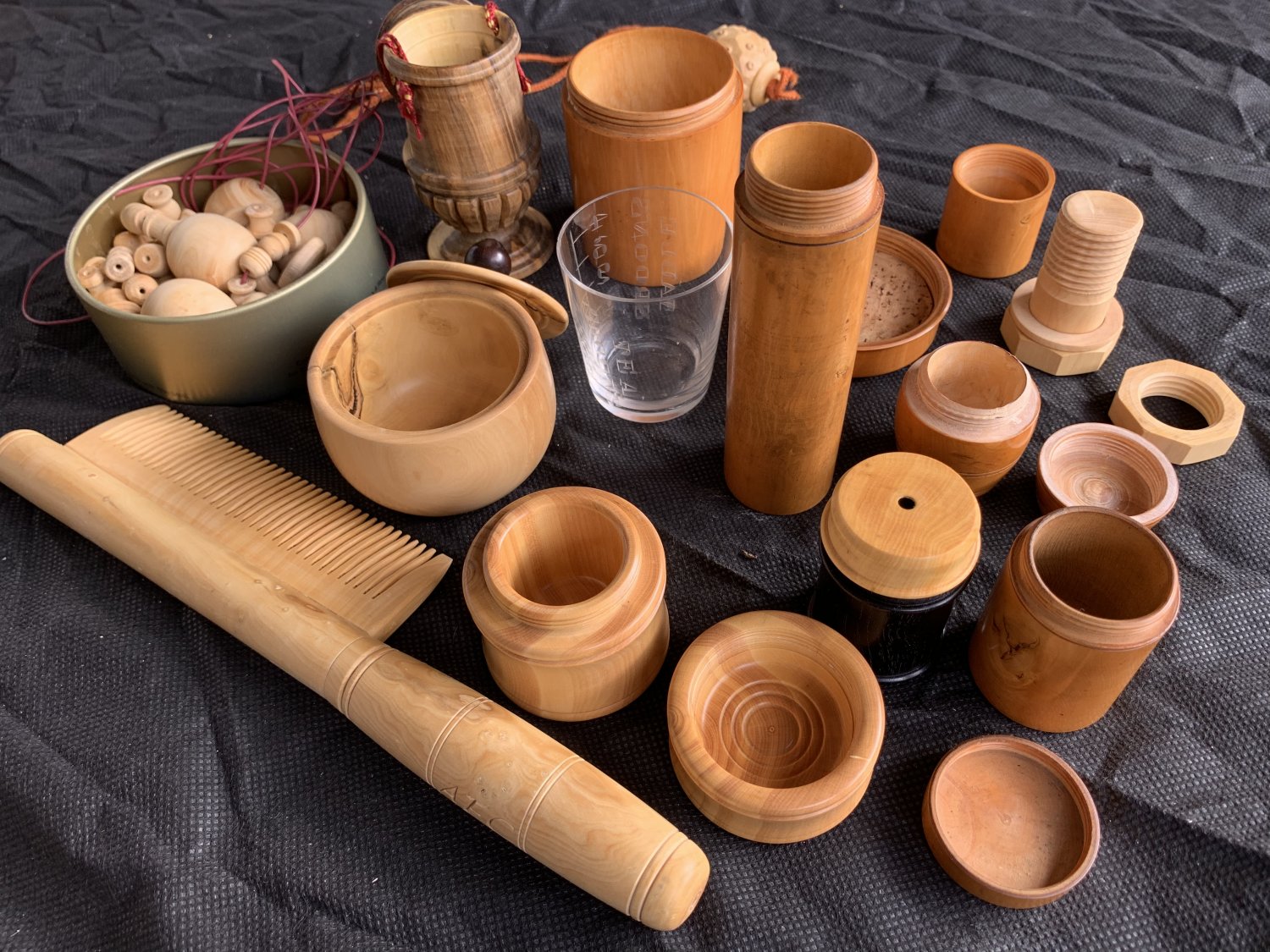Boxwood as timber
English box trades on the worldwide market as one of the most expensive timbers by volume, up to £40,000 per cubic metre. Both wet and dry are small but active markets, wholesale for larger users being usually in trees felled to order, or recently felled, mainly woodwind instrument makers. The dry processed market is often retail for smaller users, music, toolmaking, turning, carving, marquetry and a very wide variety of uses indeed.
Felling
Felling can really only take place either side of Christmas. Active growing trees usually have sugary sap which will stain the pale timber dark grey once it’s eaten by bacteria, degrading it. Clear timber from summer felled trees is possible however, as is sap-staining in winter felled, box respects few rules.
A felling day is best organised with the buyer present (or on a media link) to avoid wastage, and can be carried out without much in the way of labour or machinery beyond a pickup and a couple of chainsaws. Ropes and ladders are useful, and great care is taken to avoid cracking or unnecessary stressing, crowns removed first and the 1.5m lengths of trunks lovingly laid horizontal.
Grading
Grading box logs may appear to outsiders as a dark art, and is as complex as the number of end users. Grading can only occur at stacking (under cover in clean conditions) with end grain showing. AAA grade clear straight large logs (over 150mm diameter), with no evidence of staining or knots is the top log product but is rarely found at felling. Grade A is over 100mm with very few knots, more or less straight between branches and looking as if it will process with not too much waste. Smaller logs are B grade by size and then further categorised as for A, to logs below 80mm which rarely crack and are sold as rounds usually for the lathe. Extremely large logs at 300mm diameter or more usually have rotten or at best spalted centres and drop a grade as a result but still offer good quantities of wood once billeted.
Topiary produces interesting short logs compared to open grown trees, and it’s worth remembering that blight stains the timber sometimes quite severely. Most topiary timber is thus C grade or excellent firewood, but some can be dried for turners who prefer interesting grain.
Drying
Drying box is a slow and precise process demanding care and an experienced eye, more like ageing spirits, taking up to 10 years. All large logs produce at least one large crack within a year or two of felling. A drying shed or barn should keep the logs well away from sun, rain, too much wind, pigeons and other animals. Cut ends will usually hairline crack but not deeply. Any log sprouting fungal bodies is discarded. Billeting to a retail size with market knowledge as early as possible ensures the end user finds the timber as stable as possible. The cost of the timber gives the buyer some expectation, users being highly skilled demanding performance from the product.
Exporting
Exporting seldom takes place in log form, bark-on lumber is a prohibited import to many countries such as the biggest market in the USA. Large logs felled to order are quartered precisely, then dried and debarked, much of the shrinkage taking place at these early stages, then milled into woodwind billets, which the buyer will rough turn immediately to control the final drying process which is much accelerated by working and thinning the timber as it dries and darkens. Turning for musical instruments in dry logs is a risky business, box having unresolved tension issues in that state. It’s slow business with no more than 3mm being removed at a sitting and lots of resting.
Further info and advice
Huw Crompton has for more than 10 years planted, managed, extracted, processed and sold box timber from the UK all over the world.
If you are planning on selling any box timber call Huw for some advice on 07973 291 654 huwcrompton@aol.com.

